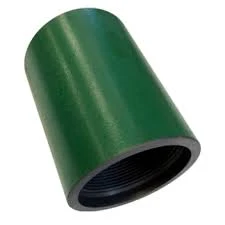- Afrikaans
- Albanian
- Amharic
- Arabic
- Armenian
- Azerbaijani
- Basque
- Belarusian
- Bengali
- Bosnian
- Bulgarian
- Catalan
- Cebuano
- Corsican
- Croatian
- Czech
- Danish
- Dutch
- English
- Esperanto
- Estonian
- Finnish
- French
- Frisian
- Galician
- Georgian
- German
- Greek
- Gujarati
- Haitian Creole
- hausa
- hawaiian
- Hebrew
- Hindi
- Miao
- Hungarian
- Icelandic
- igbo
- Indonesian
- irish
- Italian
- Japanese
- Javanese
- Kannada
- kazakh
- Khmer
- Rwandese
- Korean
- Kurdish
- Kyrgyz
- Lao
- Latin
- Latvian
- Lithuanian
- Luxembourgish
- Macedonian
- Malgashi
- Malay
- Malayalam
- Maltese
- Maori
- Marathi
- Mongolian
- Myanmar
- Nepali
- Norwegian
- Norwegian
- Occitan
- Pashto
- Persian
- Polish
- Portuguese
- Punjabi
- Romanian
- Russian
- Samoan
- Scottish Gaelic
- Serbian
- Sesotho
- Shona
- Sindhi
- Sinhala
- Slovak
- Slovenian
- Somali
- Spanish
- Sundanese
- Swahili
- Swedish
- Tagalog
- Tajik
- Tamil
- Tatar
- Telugu
- Thai
- Turkish
- Turkmen
- Ukrainian
- Urdu
- Uighur
- Uzbek
- Vietnamese
- Welsh
- Bantu
- Yiddish
- Yoruba
- Zulu
Feb . 08, 2025 06:48
Back to list
Caing Coupling
Casing and tubing are integral components of any oil and gas drilling operation, yet they often confuse beginners and veterans alike due to their similar appearances and overlapping functions. Understanding the differences between these two types of pipes is crucial for optimizing drilling efficacy and ensuring the safety and integrity of the well.
The connection types used in casing and tubing further elaborate on their differences. Casing often employs threaded connections coupled with a metal-to-metal seal to ensure high-pressure integrity; premium connections are vital in preventing leaks and maintaining well stability. Tubing connections, though similar in appearance, are typically designed for ease of assembly and disassembly, facilitating quicker maintenance or replacement. In terms of installation, casing is permanently set into the wellbore. The process requires cementing it along the borehole's length to prevent fluid migration and stabilize the hole. Tubing installation involves running the tubing inside the set casing, and it can be adjusted or removed without impacting the integrity of the wellbore itself. In summary, casing and tubing serve divergent yet complementary purposes in drilling operations. Casing’s role centers around well stability, environmental safety, and structural isolation, while tubing focuses on efficient fluid conveyance and flow management. Selecting the right materials, understanding the conditions they will face, and ensuring high-quality installations are critical in maximizing the lifespan and productivity of the well. This nuanced understanding is what differentiates seasoned professionals from novices, leading to safer, more efficient operations.


The connection types used in casing and tubing further elaborate on their differences. Casing often employs threaded connections coupled with a metal-to-metal seal to ensure high-pressure integrity; premium connections are vital in preventing leaks and maintaining well stability. Tubing connections, though similar in appearance, are typically designed for ease of assembly and disassembly, facilitating quicker maintenance or replacement. In terms of installation, casing is permanently set into the wellbore. The process requires cementing it along the borehole's length to prevent fluid migration and stabilize the hole. Tubing installation involves running the tubing inside the set casing, and it can be adjusted or removed without impacting the integrity of the wellbore itself. In summary, casing and tubing serve divergent yet complementary purposes in drilling operations. Casing’s role centers around well stability, environmental safety, and structural isolation, while tubing focuses on efficient fluid conveyance and flow management. Selecting the right materials, understanding the conditions they will face, and ensuring high-quality installations are critical in maximizing the lifespan and productivity of the well. This nuanced understanding is what differentiates seasoned professionals from novices, leading to safer, more efficient operations.
Next:
Latest news
-
Tubing Pup Joints: Essential Components for Oil and Gas OperationsNewsJul.10,2025
-
Pup Joints: Essential Components for Reliable Drilling OperationsNewsJul.10,2025
-
Pipe Couplings: Connecting Your World EfficientlyNewsJul.10,2025
-
Mastering Oilfield Operations with Quality Tubing and CasingNewsJul.10,2025
-
High-Quality Casing Couplings for Every NeedNewsJul.10,2025
-
Boost Your Drilling Efficiency with Premium Crossover Tools & Seating NipplesNewsJul.10,2025
Related Products







